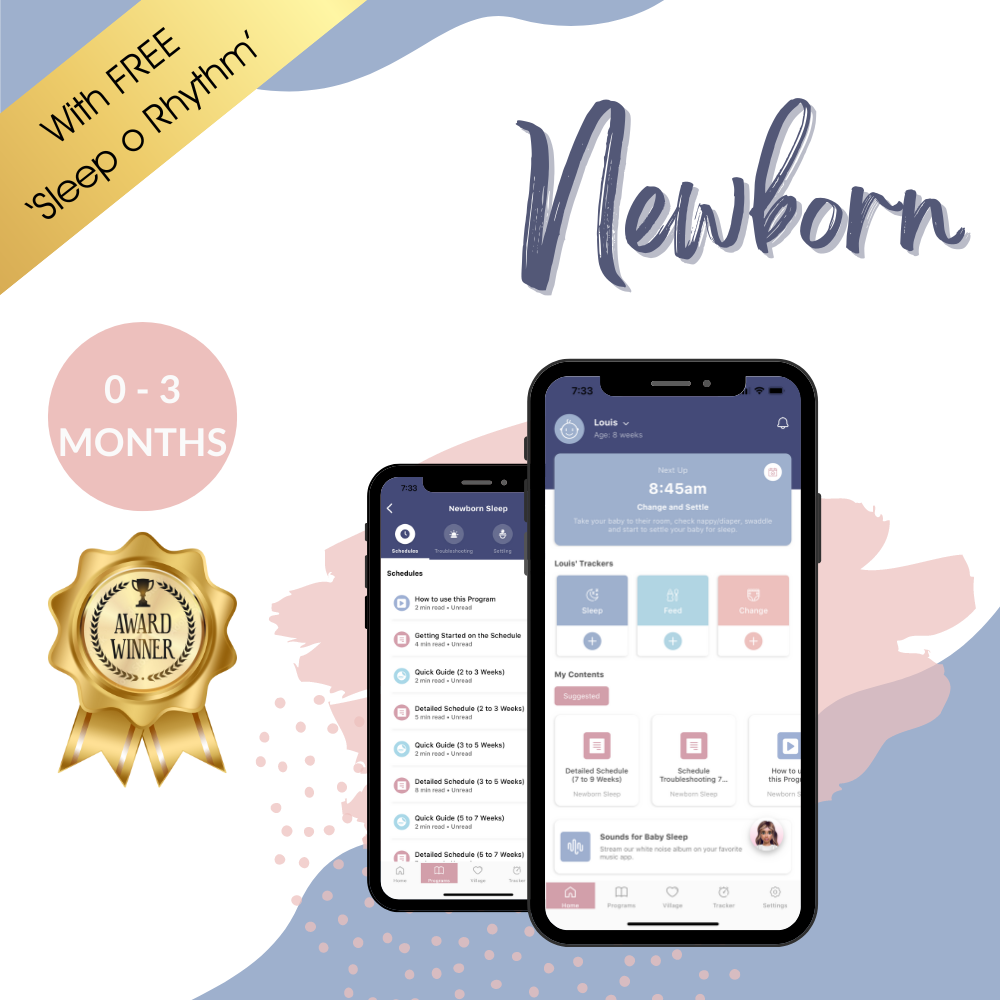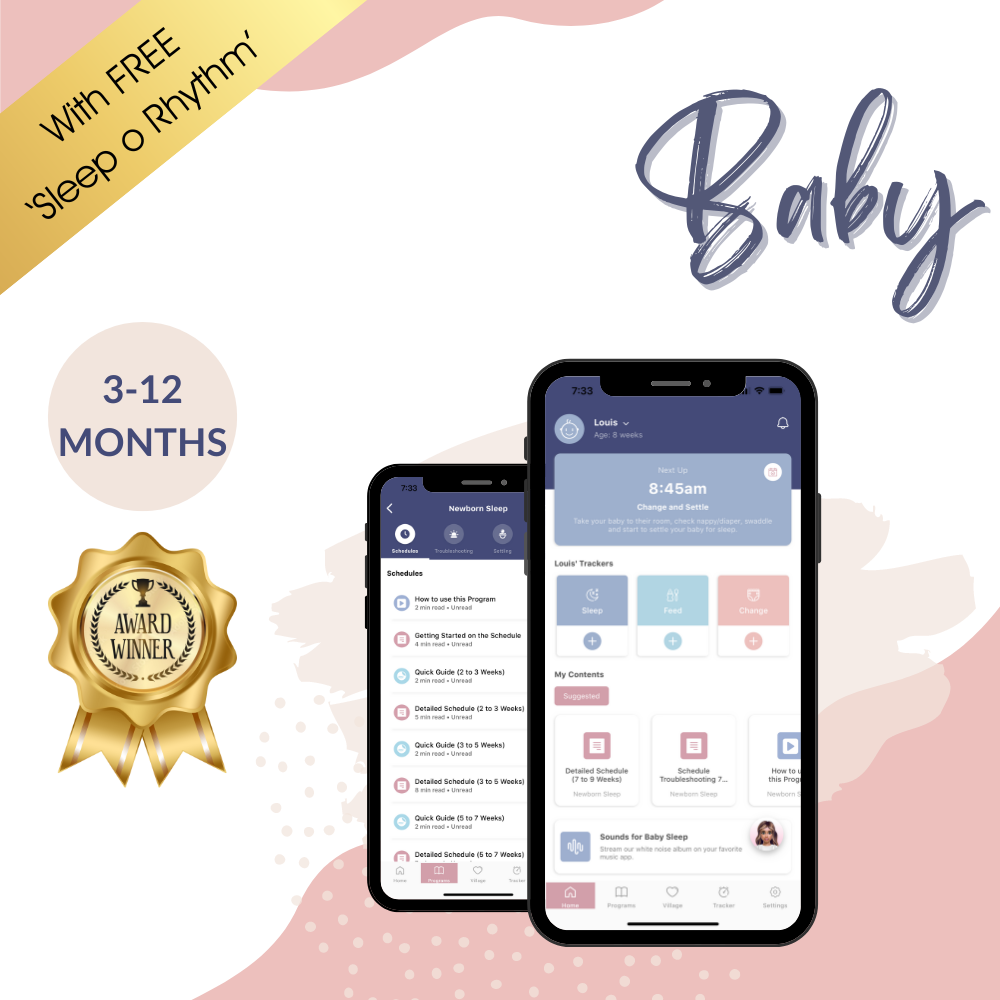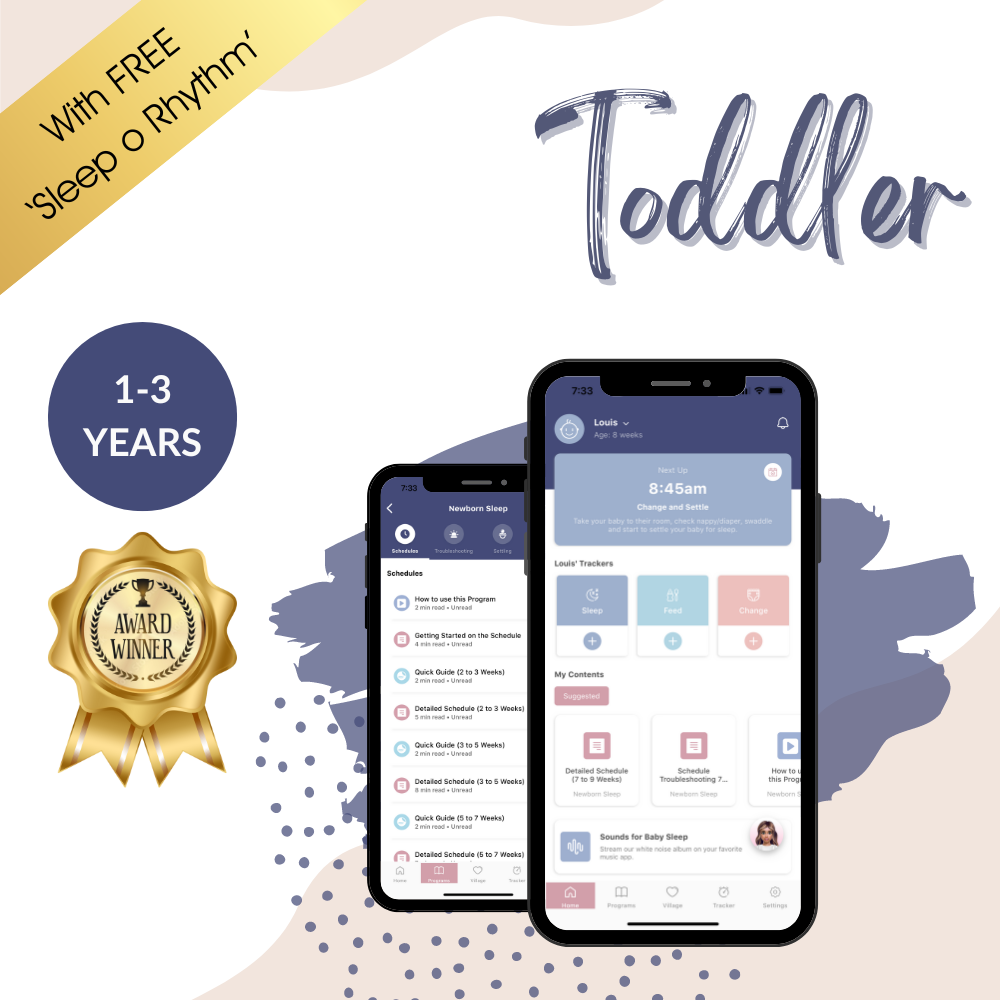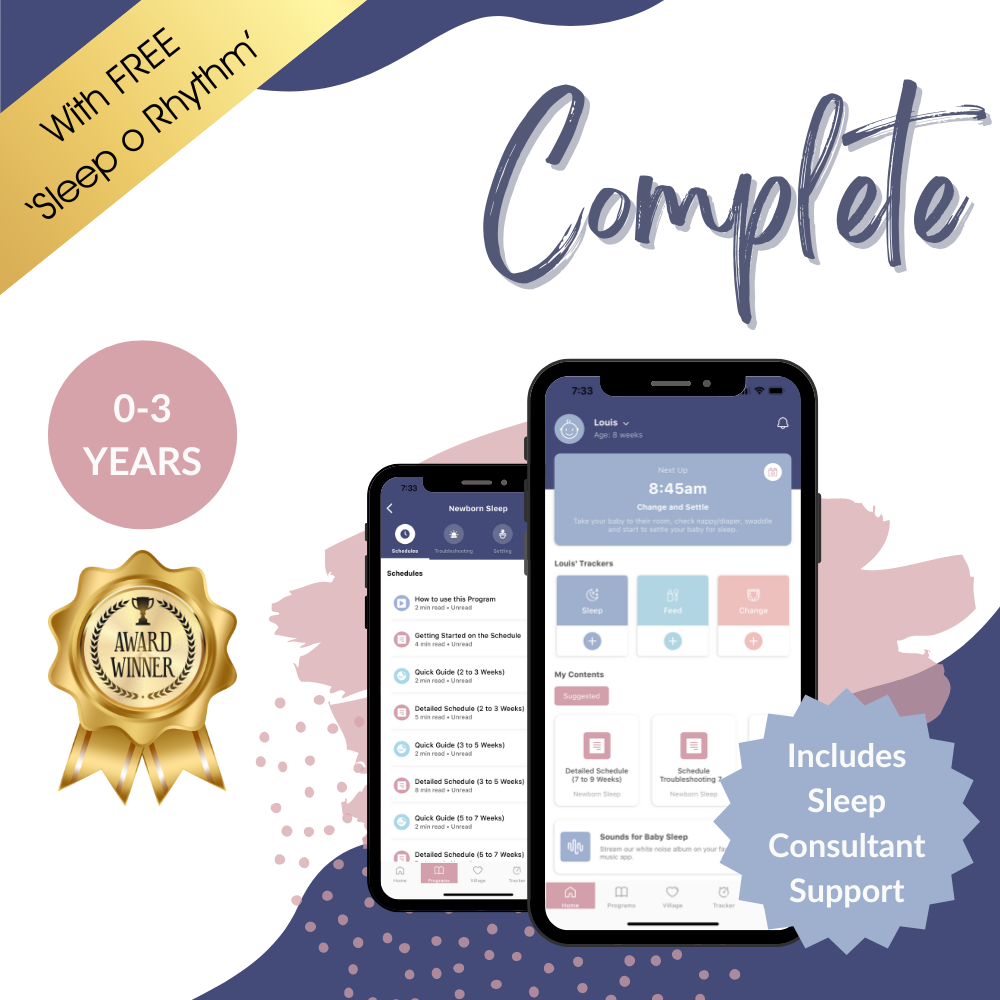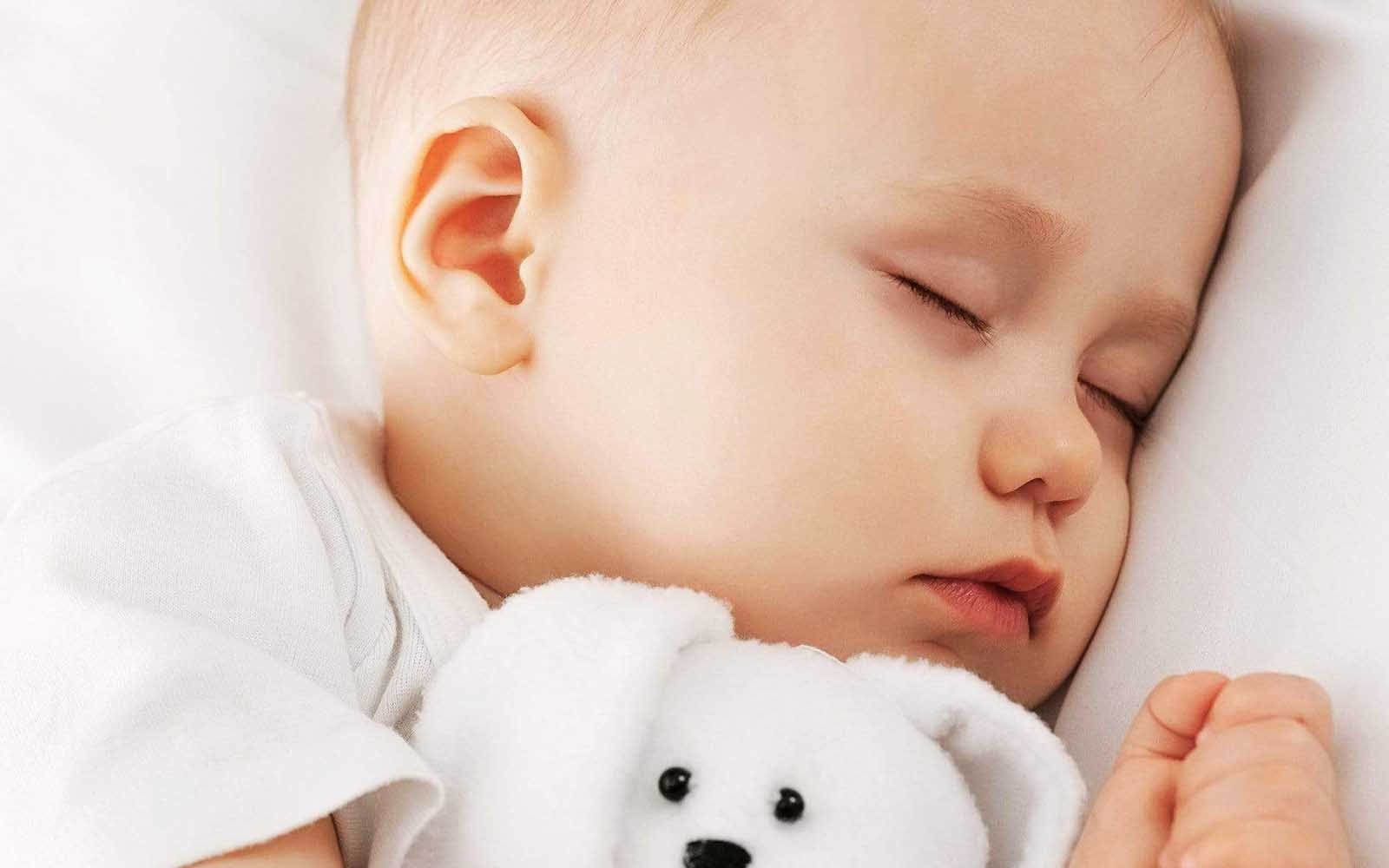
SLEEP ASSOCIATIONS... What's all the fuss about?
Sleep associations, sleep props, sleep crutches, sleep habits... whatever you call them they're probably something you’d never really thought about before having a baby. Even after becoming parents, many people still don't fully understand how heavily their baby's "sleep associations" affect the length and quality of their wee one's sleep.
It really is worth all the fuss.
In this article:
- What are sleep associations?
- The neurological sleep change
- How sleep associations form
- Types of sleep associations
- How to change your baby's sleep associations
Stuck with a sleep association? Head towards better sleep!
Found yourself struggling with a sleep association and don't know how to move your baby away from it? Whatever your sleep challenge is, we have a range of gentle settling methods to choose from, along with sleep experts who are available to guide you at every step.
Get our Sleep Programs
What are sleep associations?
Sleep associations are simply cues or behaviors that your baby associates so strongly with going to sleep, they will struggle to sleep without them. In a nutshell, the way we put our babies down to sleep will dictate how they learn to go to sleep; it's all they know.
If we think about how adults go to sleep it might help explain things. For me to go to sleep I firstly need to be tired enough, then I need to lay in a bed in a dark room, with the blankets pulled up and not too hot or cold, laying on my back, arms above my head. If I wake in the night to go to the bathroom, the same process needs to be repeated in order for me to go back to sleep. It sounds crazy that all those things have to be in line, but have a think about it tonight when you go to sleep - you too will have a similar process!
It's the same for babies except, in this instance, we are the ones who establish what their sleep associations will be. If your baby goes to sleep with you rocking them, this is their sleep association and the only way they know how to go to sleep. If your baby goes to sleep in their bed by sucking their thumb, this too is their sleep association, however, the difference is your baby is able to control their own sleep prop in this instance... And why is this important?
Well...
The neurological sleep change
Around 3 to 4 months old babies begin to sleep the same way as adults with clear daytime and night time sleep cycles, and will start to wake fully in between those sleep cycles. This stage in your baby's development is commonly called the 4 month sleep regression.
Once this change occurs, sleep associations start to play a big part in your baby's ability to go to sleep and stay asleep because sleep has now become an active process rather than a reactive process (like when your baby was younger).
From this age onwards the way babies are put to sleep at the start of a nap or at bedtime is the method they completely rely on to go to sleep. When your baby then naturally wakes at the end of a sleep cycle, if that same sleep association isn’t there they will not be able to go back to sleep without it.
This is why your baby may start catnapping for only 45 minutes during the day and waking every 2 hours in the night beyond the age of 4-6 months and need your help to go back to sleep each time.
Let's look at how sleep associations form...
New sleep associations often develop during periods of big developmental change, such as sleep regressions and nap transitions.
During these times, your baby or toddler might be more difficult to get to sleep. They might be over or under tired, or they are standing or sitting in their crib, or their nap needs have changed. In any of these situations, they won't be able to settle to sleep easily.
So, you might start rocking or feeding to assist your baby to sleep, or staying in the room with your toddler. Over time, your little one will come to expect that same input every time they go to sleep and before you know it, a new sleep association will have formed.
Say goodbye to sleepless nights.
Join over 800,000 families worldwide who are enjoying excellent sleep with our Sleep Programs, created by experts in the field of pediatric sleep.
Get our Sleep Programs
Now, this doesn’t mean you can’t ever pat, rock or feed your little one to sleep! In fact, there may be times where your baby genuinely needs your help to settle. These can include:
- When your baby is close to dropping a nap and starting to resist that nap
- When your baby is unwell
- When they are overtired and you just need to get them to sleep quickly!
- When you're doing a nap on the go in the pram, carrier or car
- When you're in an unfamiliar sleep environment, such as away on holiday
If you have an odd occasion like this and your baby isn’t settling, it’s absolutely fine to settle them to sleep however you can. The key is to make sure that this doesn’t become the norm. Sleep associations can be formed in as little as three days, especially for older babies (over 6 months) and toddlers.
Making sure your baby's awake times and nap lengths are spot-on for their age is a crucial element in your baby being able to settle to sleep easily, without too much active settling required.
Types of sleep associations
There are many different types of sleep associations but we can categorize these as either baby-controlled or parent-controlled.
Baby-controlled sleep associations
These are things that a baby can easily access or use or do themselves to assist them to fall asleep, or things in a baby’s sleep environment that signal to them that it is time for sleep. If your baby is using these things, they will be more likely to move between sleep cycles on their own, without needing your help. These are:
- A lovey or comforter
- Baby sleeping bag
- Swaddle (in babies younger than 4/5 months, who aren't rolling yet)
- Pacifier (around 7/8 months, once they can replace the pacifier themselves)
- White noise
- Dark room
- Thumb sucking
Another great thing about these baby-controlled sleep associations is that they are portable. So if you’re needing your little one to nap on the go, you can give them their cuddly or comforter, put some white noise on, pop them in their sleeping bag and perhaps use a travel blackout cover.
Voilá, you have recreated their familiar sleep associations away from their usual sleeping space. This will help to signal to your baby that it is time to sleep.
Parent-controlled sleep associations
These are things that a parent (or caregiver) has to do to get the baby to sleep; things a baby is incapable of replicating themselves. If your baby is dependent on one or more of these associations to get to sleep or to stay asleep, then they are not self-settling yet. The most common are:
- Feeding/nursing
- Rocking
- Patting or tapping
- Shushing
- Holding or cuddling
- Bouncing on an exercise ball
- Co-sleeping
- Parental presence (staying in the room)
- Replacing a pacifier (for babies younger than 7/8 months)
Do babies grow out of sleep associations?
While it's possible that some babies naturally become less dependent on a sleep association over time, they are unlikely to wake up one day and completely reject a familiar sleep association like rocking or feeding.
Learning how to go to sleep without relying on a parent-controlled sleep association is a skill. Once your baby learns how to do this, they will be considered to be “self-settling”.
Self-settling simply means they are able to put themselves to sleep consistently at the start of their naps and bedtime without any help from you. They will also be able to resettle themselves when they wake between sleep cycles, both day and night.
A 2018 study of babies between 6 to 12 months old found that up to 57% of babies did not sleep for 6 or more consecutive hours overnight. This suggests that the majority of babies in this age bracket still have some kind of parent-controlled sleep association that they have not grown out of.
Let's get your little one's sleep sorted ASAP!Our award-winning Sleep Programs will solve your baby's sleep challenges in no time.
Get our Sleep Programs
Self-settling is a lifelong skill that will benefit your baby and hopefully improve both of your sleep too!
How can you change the way your baby goes to sleep?
Remember, sleep associations are a normal part of getting to sleep for babies and adults alike. It's only when these associations disrupt your baby's sleep, because they require your assistance to resettle in between sleep cycles, that they can become problematic.
Before the age of 3-4 months, most babies are unable to consistently self-settle so it is likely that you will need to help them get to sleep. Don ‘t worry about your baby developing “bad habits”, it is absolutely fine to settle your baby all the way to sleep at this age.
From around 3-4 months onwards though, if you feel that your baby’s current sleep associations are unsustainable or that they are negatively impacting your baby’s sleep, it might be time to start thinking about teaching your baby how to self-settle.
Like any new skill your baby has learned (rolling over, sitting up, standing, walking), learning to self-settle is going to take time and practise. And there are bound to be frustrations along the way - learning something new can be tricky! Luckily, we have some tips that can help…
Establish some positive sleep associations
Before you start to wean your baby off a parent-controlled sleep association, make sure you have some baby-controlled or environmental sleep associations in place, like the ones listed earlier. Establishing these positive sleep associations first will give you the best chance at weaning your baby off their current parent-controlled sleep association.
Aim for age-appropriate awake times and nap lengths
Another way you can help your child move away from a parent-controlled sleep association is to make sure they are having the correct amount of awake time and sleep during the day. If your baby is having very short awake times for their age then they are likely under tired when you’re trying to get them to sleep. This can mean you’re having to do a lot of work to get them to sleep.
Alternatively if your baby is having long awake windows between naps or having very short naps, they may be overtired. A baby who is overtired and overstimulated will struggle to get to sleep so again, they will likely be needing your help to actively get them to sleep.
Work with your little one’s current sleep association
Now that everything else is lined up, you can start to gently wean your little one off their parent-controlled sleep association. How you approach this is going to depend on your little one’s age and current sleep association.
For example, for a younger baby who is fed to sleep, you could feed your baby until drowsy instead of all the way to sleep. Then give them a chance to do the last bit of falling asleep on their own, in their bed.
For an older baby who is rocked to sleep, you might want to try putting them into bed awake and calm and then just rocking to soothe them as needed, giving them a chance to self-settle in between.
Or, if you’ve found yourself stuck in your toddler’s room while they go to sleep, you can start a gradual retreat towards the door and, eventually, out of the room.
Our Sleep Programs contain gentle, age-appropriate methods to guide your baby or toddler towards self-settling and we have certified sleep consultants available in the Little Ones Village to support you every step of the way.
Whatever approach you choose to go with, don’t panic if self-settling doesn’t happen straight away. Remember, your little one doesn’t know what is expected of them yet. But with time, practise and your love and reassurance guiding them, they will soon get the hang of it!
Bibliography
Pennestri MH, Laganière C, Bouvette-Turcot AA, Pokhvisneva I, Steiner M, Meaney MJ, Gaudreau H; Mavan Research Team. Uninterrupted Infant Sleep, Development, and Maternal Mood. Pediatrics. 2018 Dec;142(6):e20174330. doi: 10.1542/peds.2017-4330. Epub 2018 Nov 12. PMID: 30420470.
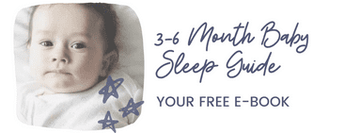
Receive product and services updates, promotional offers and other marketing communications based.


